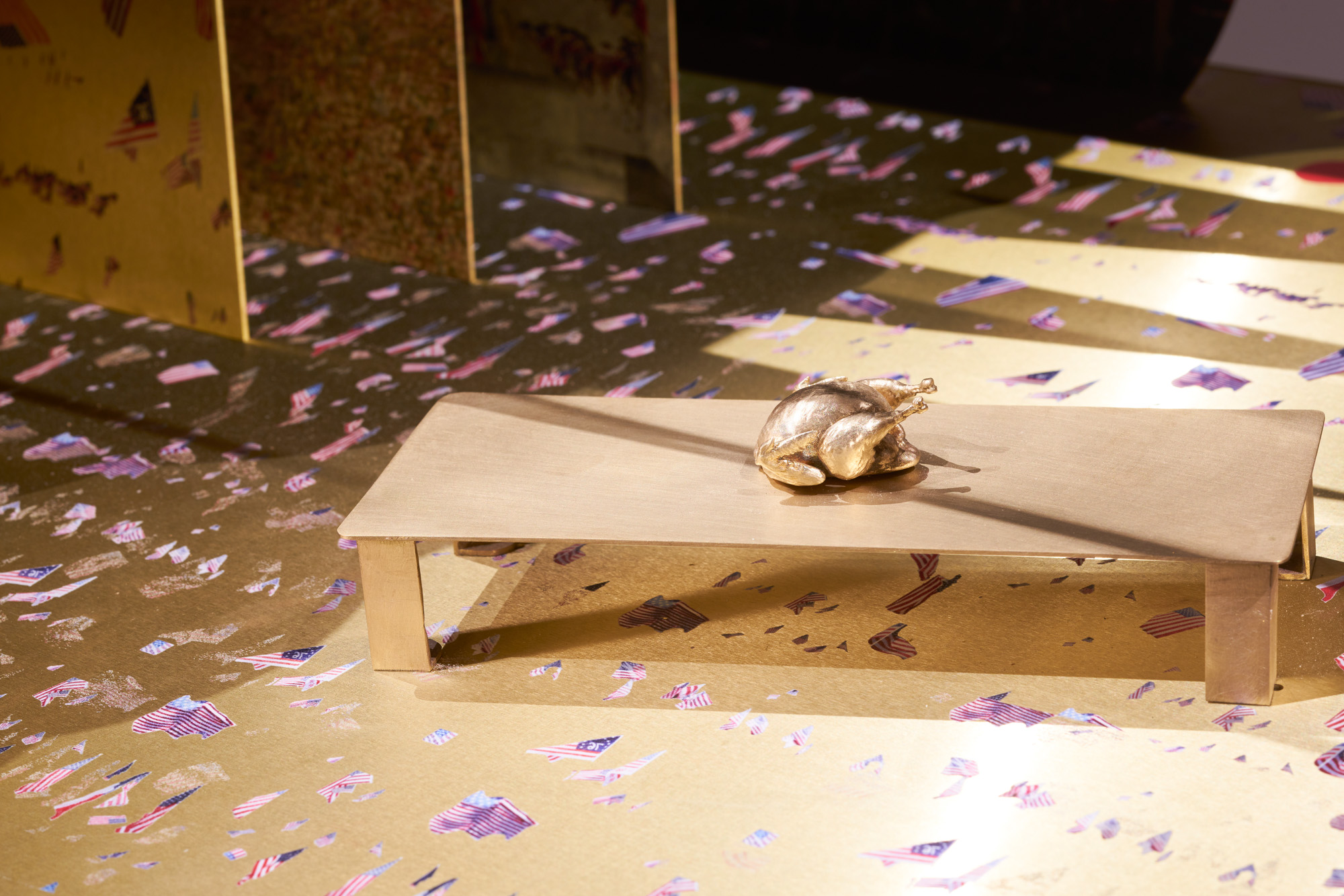Shows
Specters of History at “Next Act: Contemporary Art from Hong Kong”


There is no future for Hong Kong—only a multitude of pasts, some partially recollected, others still inhabited. That was the perspective refracted through the works by ten artists selected for “Next Act: Contemporary Art from Hong Kong.” As exemplified by Sara Wong’s installation Windows for Inspection (2020), in which she traces in phosphorescent outlines the remnants of bygone architectural forms and recreates the ghostly sounds of soldiers, the exhibition’s setting at Asia Society Hong Kong—formerly the British navy’s explosives magazine—enabled cultural histories to resonate with contemporary anxieties about the region’s position between hegemonic spheres of influence.
Recalling the last time the United States squared off against a rival superpower, Christopher K. Ho’s installation Always Stop Eating While You’re Still a Little Hungry (2020) featured large decals on Asia Society’s main building of the American gymnast Mary Lou Retton from the 1984 Olympics, which are viewable through a miniature brass model of a theater set adorned by cheering American sports fans. The complex layering of components in Ho’s work alludes to the spectacles of sport and politics that anchor American national propaganda—as well as Asia Society’s establishment by John D. Rockefeller III in 1956 during the Cold War.
Digging into Asia Society’s institutional history, Andrew Luk’s Echo Chorus (2020) rendered boundary stones in diverse materials, including an outdoor sculpture of salt lick blocks meant to lure wild creatures as well as indoor versions in charcoal, ice, and copper. The latter bears texts related to Asia Society’s early years, including documents recording McCarthy-era US lawmakers’ suspicions that it was a “subversive organization” sympathetic to communism, and promotional material for a 1984 discussion on “The Future of Hong Kong”—historical events that become markers for the present.

Delving even further into the past, Samson Young’s two-channel video installation The World Falls Apart into Facts (2019) looks at the entanglement of foreign influences with traditional Chinese music, beginning with the European transcriptions of the “Molihua” (“Jasmine Flower”) song that were then reabsorbed into Chinese culture. On one screen, a horse delivers a lecture on the song’s history and links it to the popularity of adult contemporary musicians like Kenny G (who recorded his own signature saxophone version of “Molihua”); projected opposite is a video of a performance in which Young and a choir dressed in fruit costumes perform a Togaku concert (Tang-dynasty Chinese court music preserved for more than a millennium in Japan). Reaching back into Sino-European history, the duo Zheng Mahler’s newly produced installation on the intersection of the porcelain trade and the rare-earths industry plays out through a series of digital animations on whirling holographic fans.

Specifically local histories, from 50 years ago, are narrated in Leung Chi Wo’s single-channel black-and-white video, My Random Diary (2020), captured at contemporary locations of sites of crimes reported in local newspapers. Cici Wu’s The Unfinished Return of Yu Man-hon (2019) imagines what happened to the autistic boy who crossed from Hong Kong into Shenzhen on August 24, 2000, and was never seen again; in the 16-mm film, he navigates Hong Kong as a spectral figure. Isaac Chong Wai’s Falling Carefully (2020), a humorously life-like sculpture of three miniature versions of the artist entangled with one another, turns imbalanced postures into a model of mutual support and stability; a series of drawings of falling protest figures on the walls link Hong Kong’s recent anti-government protests to similar uprisings around the world in the last decade.
The one work in “Next Act” to gesture toward the future—although with limited optimism—is by Guangzhou-based Vivian Qin (also known as Xiaoshi Vivian Vivian Qin), whose installation If Sunset Had a Voice (Doomsday Preparation Plan) (2020) features a large circular screen for a shadow-play through which visitors see hanging texts by poet Kenji Miyazawa, and the projected silhouette of the artist asking for wisdom on mutual survival. The narrator in Qin’s work exemplifies a kind of care—the essence of the word “curate”—for the fate of the world that Asia Society regrettably did not evince for many of the works. The surfaces of Christopher K. Ho’s sculpture were smeared with swirls of dust and the wooden tongue badly splintered; you can’t hear the audio components of Zheng Mahler’s and Qin’s installations at all. From Asia Society’s lofty, colonial-era position overlooking the city, it’s hard not to read this institutional attitude metaphorically. There’s historical continuity in Hong Kong but it’s not one that inspires hope for what’s to come.
HG Masters is the deputy editor and deputy publisher of ArtAsiaPacific.
“Next Act: Contemporary Art from Hong Kong” is on view at Asia Society Hong Kong Center until September 27, 2020. Please check the exhibition web page for up-to-date information in light of Covid-19.







